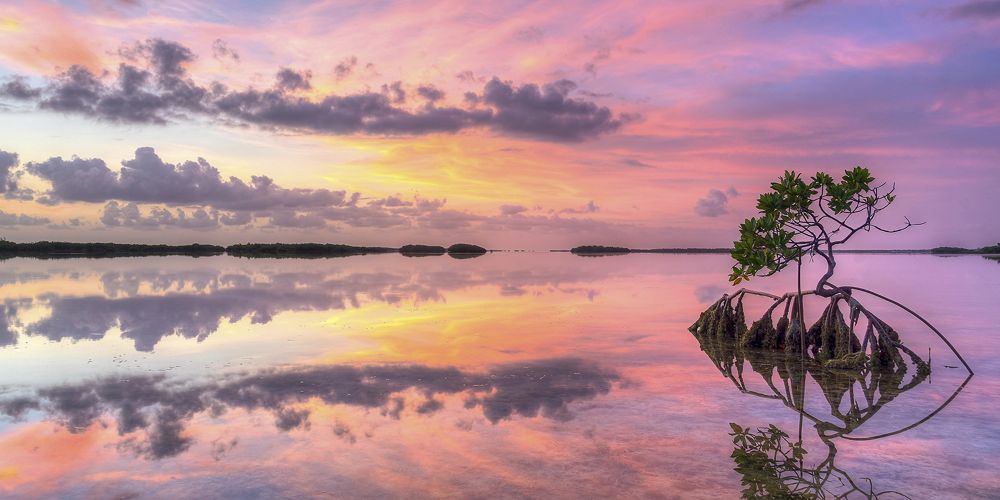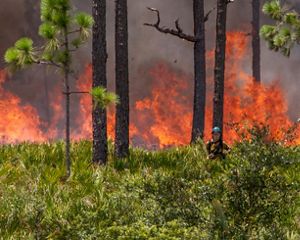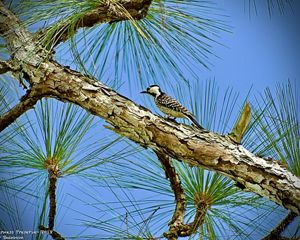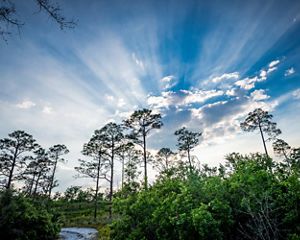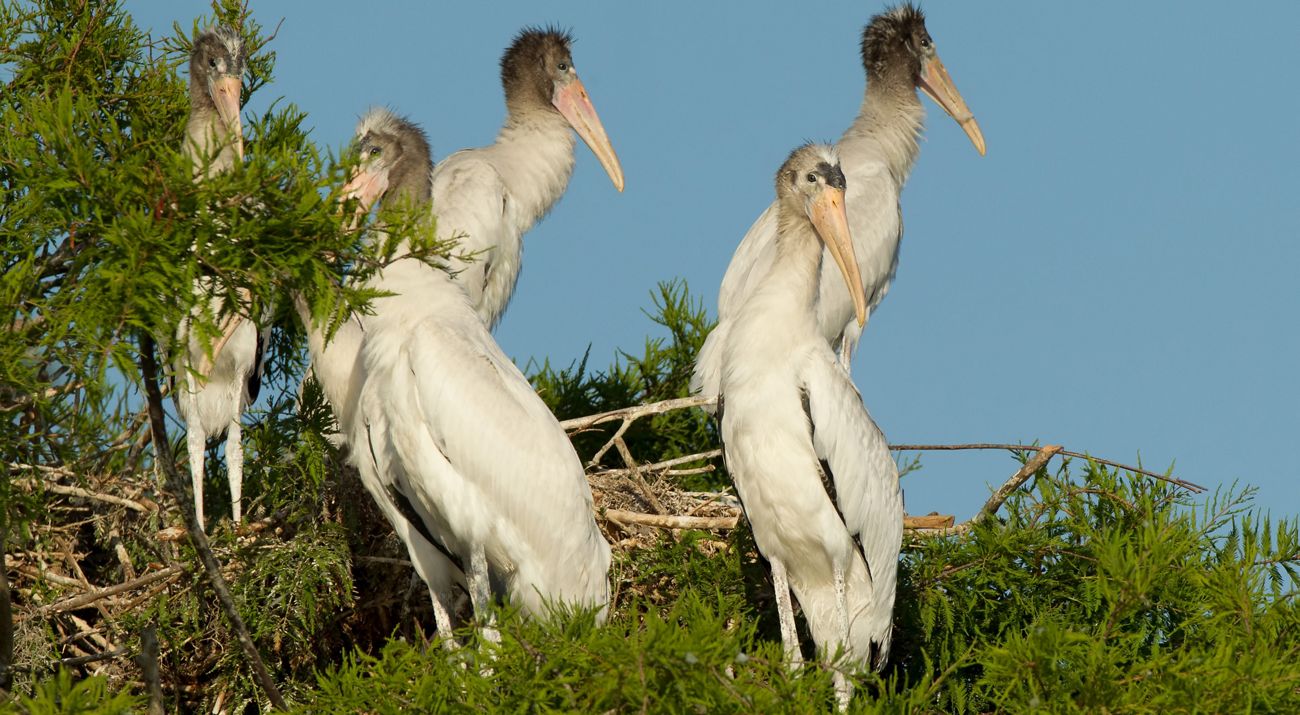
Wood Storks at Disney Wilderness Preserve
North America’s only native storks are going strong in Central Florida.
Ideal Conditions for Wood Storks at the Preserve
Just after dawn, when zoologist Sue Maher arrives at TNC’s Disney Wilderness Preserve she unlocks the gate and heads down the mile-long road to Lake Russell. There, she retrieves a green canoe and drags it to the water’s edge, pointing it toward the rookery, where in recent years, ideal conditions have helped wood storks flourish in record numbers. Maher paddles close enough to hear the calls of the birds. But she stays far enough away to see 50–60 feet up to the tops of the trees, where the storks prefer to stay, undisturbed.
Maher knows exactly when the storks will arrive each season—February or March—and when they will depart with their fledglings three or four months later, because she has been monitoring wood storks at the preserve for more than a decade.
“I did basic work at first,” she said. “Helping to track the birds, learning how to record the data correctly. And I was hooked. I felt like I was making a contribution.”
Maher now runs the project. Each year for the storks’ four-month nesting season, Maher and her crew of volunteers identify and mark trees with tags in preparation for the birds’ arrival. They count trees with active nests, the number of adult storks and later the chicks. Then they observe their behavior.
The Disney Wilderness Preserve offers ideal conditions for wood storks. It has the right depth of fresh water: Storks prefer to build or select a previous year’s nest where the water is up to three feet deep, to keep terrestrial predators like racoons and snakes away from their eggs. When storks arrive at the preserve, they settle in right away to build their nests. About four weeks later, their eggs hatch. The preserve has the right trees for nesting: mangroves or cypress. The preserve also offers plenty of food for foraging. A nesting pair of storks and their young require more than 440 pounds of fish for the season.
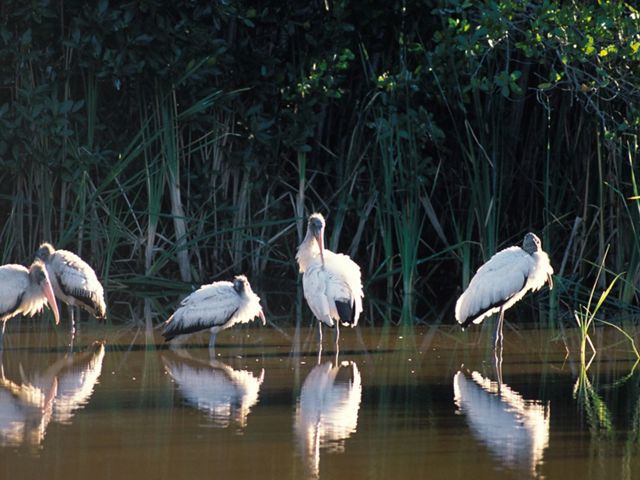
How Do Wood Storks Feed?
The higher waters needed for nesting are in contrast to the shallow waters needed for foraging. Storks have a specialized feeding regimen. They sweep their partly open beak back and forth in shallow water to probe for and quickly trap fish. It’s too deep to feed where they nest. Instead, they fly to shallow lakes or swampy wetlands where prey is concentrated. Storks are known to fly several miles from the nesting colony to forage, but storks have a relatively short commute at the preserve. There are ponds on site developed specifically to provide foraging habitat for wood storks. As the dry season begins, the water levels in these ponds drop just in time for the storks to begin feeding their young.
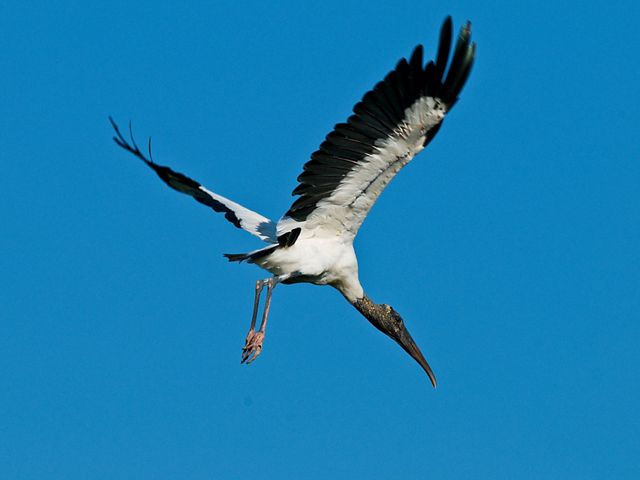
Where Do Wood Storks Migrate?
A long-legged wading bird that can be 50 inches tall, the wood stork (Mycteria americana) has a wingspan of 60–65 inches. The preserve colony migrates from Mexico or South America. Monitored birds in Jacksonville are known to migrate to the same rookery each year. Though the Disney Wilderness Preserve population isn’t tracked, it’s likely that the same birds return each year.
Initially listed under the Endangered Species Act, the wood stork was reclassified as threatened in 2014. It is part of the U.S. Fish & Wildlife Service (FWS) species recovery effort. Maher submits her reports to that agency each year.
Help Us Make a Difference for Nature
For more than 60 years, we have been working to conserve the lands and waters on which all life depends in Florida. We have helped protect more than 1.2 million acres of vulnerable lands and waters in Florida, and we own and manage more than 40,000 acres including four preserves that are open to the public.
